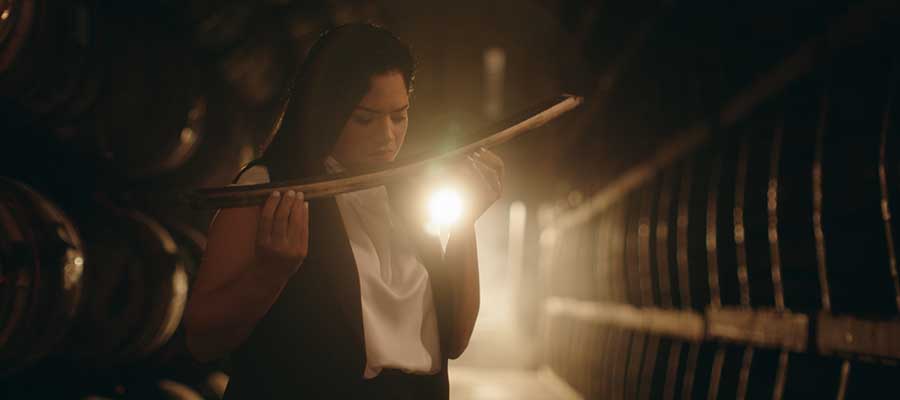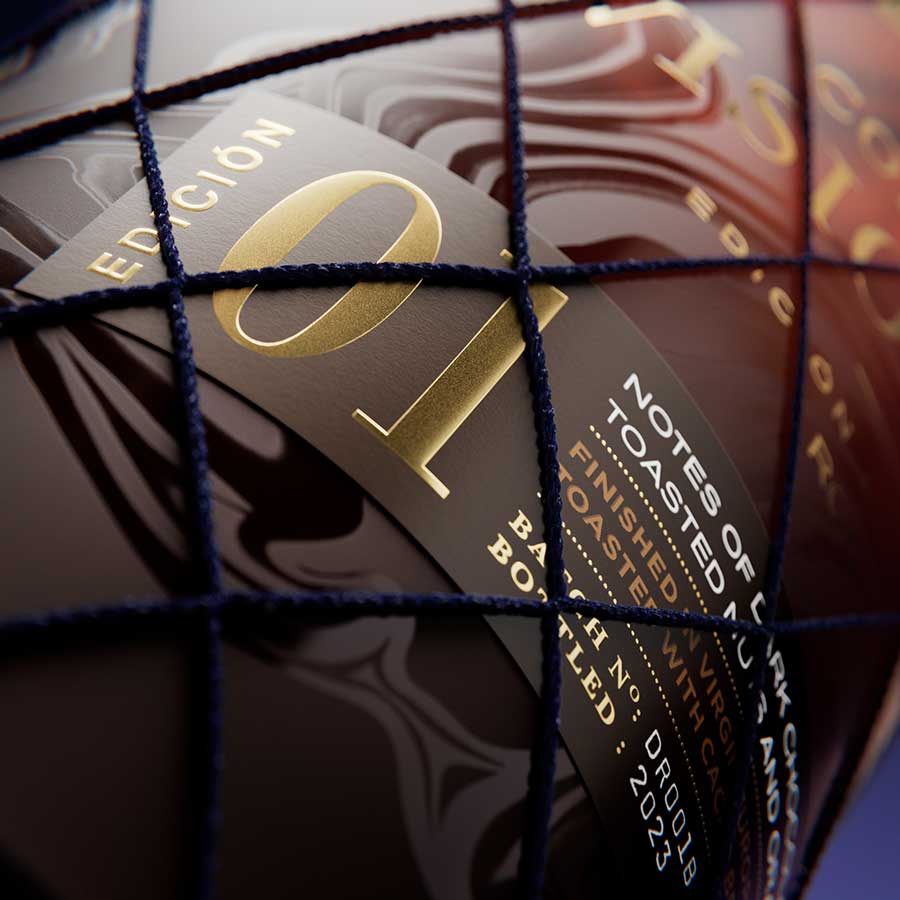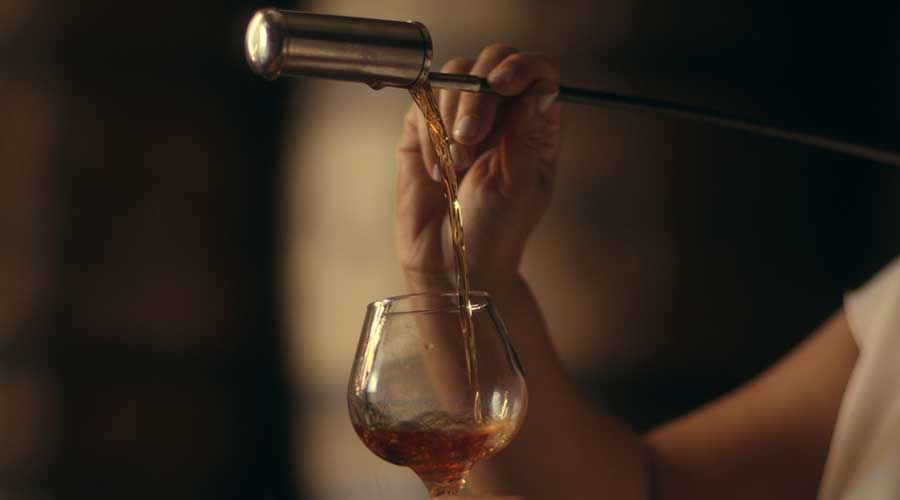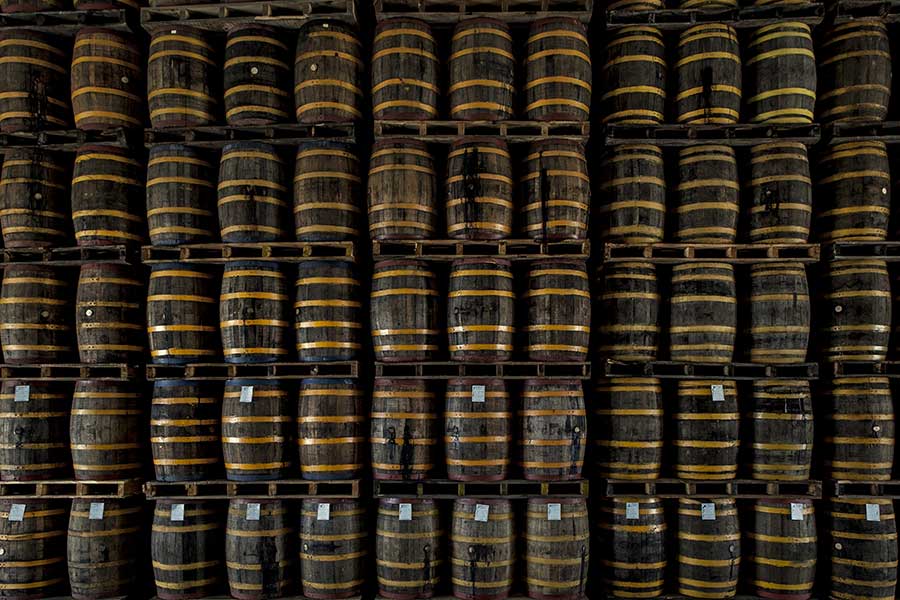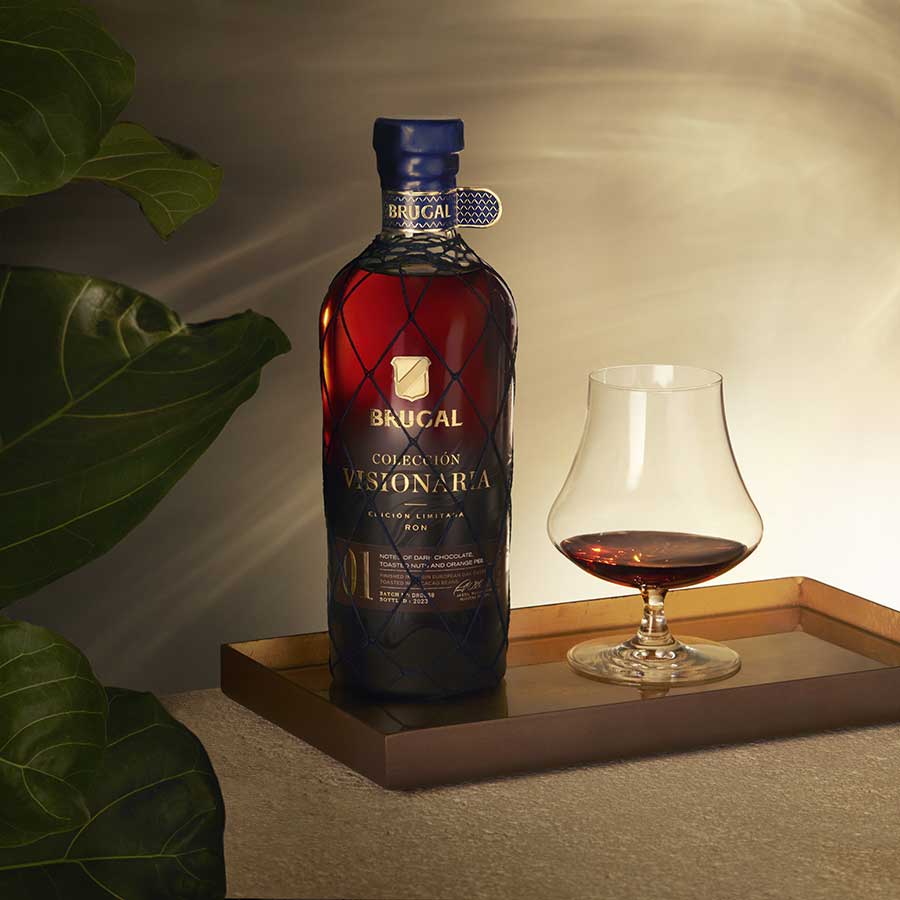Brugal is successfully establishing itself in the premium rum segment of the French market. We already knew about its Cuvée 1888, but the Dominican brand is going one step further with the launch of its Colección Visionara, which opts for innovative ageing techniques. Jassil Villanueva, Brugal’s master blender, explains.
What is the history of Brugal in the Dominican Republic?
Brugal was founded in 1888 by my great-grandfather. He left Spain for Cuba, where he started a family and learned the art of making rum, and then he moved to the Dominican Republic, more precisely to the northern part, to Puerto Plata, and that’s where the Brugal story began. And that’s where our maturing and production facilities are today.
So you also have a distillery?
Yes, the process is divided into two. Initially, everything was located here in Puerto Plata, but around the 1990s, the sugar cane fields in the area began to decline. At a certain point, we took the strategic decision to move our distillery instead of bringing the molasses to the north of the island to continue producing our alcohol here.
So we moved our distillery to a facility we have in the east of the island. The first part of the process takes place in San Pedro de Macoris, in the east of the island, where our distillery is located, producing 24 hours a day exclusively for Brugal.
Then, every day from Monday to Friday, we transport lorries loaded with spirits to the north of the island, in Puerto Plata, where the ageing and production process takes place.
Who manages the Brugal brand?
The brand was 100% family-owned until 2008, when the Edrington Group acquired the majority of the shares.
Now let’s talk about the raw material. What is it?
As I mentioned earlier, our distillery is located in the east of the island, where we buy 100% Dominican molasses. We bring it to our distillery from the nearby refinery and sugar cane field.
There we begin the fermentation process, adding yeast and molasses to obtain a fermented wine that we distil. We carry out a double distillation in a steel column, the first consisting of eliminating everything that is not alcohol, the second being a rectification column.
We make sure that we produce one of the purest alcohols, 95%, because we want all the characteristics of the final liquid to come from the cask and not from the raw material used in the process.
How long does the fermentation process last?
Between fermentation and distillation, it takes between 36 and 42 hours. And we produce batches. So our distillation never stops. We work 24 hours a day, seven days a week. And we only stop for maintenance two or four times a year.
How does the ageing process usually work for Brugal rum?
We received the 95% alcohol, which we transferred from the distillery in San Pedro de Macoris to Puerto Plata, and then began the ageing process. To begin the ageing process, we diluted the alcohol from 95% to 65% with demineralised water. Once again, we make sure that all the characteristics of the liquid come from the cask, and not from the raw material. So we remove the nutrients and minerals from the water, so that we don’t add any flavour to the water we use for dilution.
So there are two important things. To be considered rum in the Dominican Republic, it must be aged for at least one year under government supervision. This is an important element. Secondly, to be considered Dominican rum, it must contain at least 51% Dominican raw materials.
What types of casks do you use?
At the moment, we fill 99% of our casks with American white oak, ex-bourbon, with medium toast. But we also use other types of cask for the second ageing, which demonstrates our mastery and expertise.
Once the first ageing is done in American oak, we proceed to the second ageing for products such as 1888 or the Visionaria collection that we have just launched in the United States, where we use European casks. So, in our portfolio, as well as American white oak casks, we also have European casks used for Sherry, European Pedro Ximénez casks.
And we have all the types of casks we’re working on for the innovations you’ll be seeing in the coming months. For the moment, I’d say these are the four main casks we’ve included in our portfolio.
Are there any unique Cask?
None of our products is a unique cask. We believe that each cask has its own life, its own personality and our job as master blenders is to ensure that we make the perfect combination of these casks to get the final product, because at the end of the day, making rum is a process that we’re very proud of.
Is it a solera system?
No, we don’t use a solera system. Dominican law forbids us to use a solera system if we want to talk about Dominican rum. We have to use traditional ageing.
And where does Brugal get its European casks from?
When it comes to European casks, we benefit in particular (but not exclusively) from the advantages of being part of the Edrington group: all our casks come from sherry growers, who carry out the entire cycle for us.
We ensure that when our wood is cut, it is replanted to protect the environment. The casks are then transported to Jerez for the production process. Some of them go to Scotland to be used in whisky, and others come to the Dominican Republic to produce Brugal 1888 or other expressions that we have in our product portfolio.
And what about the Colección Visionaria Edición 01? Can you tell us how you go about this new rum?
Of course I can. The Visionara collection is a product we’re very proud of. We’ve introduced a new technique, which is an oak-roasting process. The basis of Coleccion Visionaria is a double maturation like 1888 (ex-bourbon followed by ex-Sherry Oloroso).
We’re then going to do a finish in a new French oak cask from Cognac, which we’ll toast for around 45 minutes-1 hour with cocoa beans from San Francisco de Macoris, in order to integrate their flavours into the cask.
The idea is that we don’t want to add anything to the final liquid, to the product itself, so we consider that the cask is the most important thing and we’ve introduced this new technique which allows us to add, I don’t know, an extra flavour to the cask. But without adding anything to the liquid.
We do an aromatic roasting of the cocoa-based casks and then a finish of around 6 months in the same casks. This is simply a new aromatic roasting technique exclusive to Brugal that allows us to enhance our notes in the final liquid without adding anything, simply by using our expertise and knowledge of wood.
What are Brugal’s next ageing techniques for the Visionaria collection?
The Visionaria collection will be a limited edition that we will launch over the next four years. The first was cocoa, a well-known treasure of the Dominican Republic, one of the ingredients we have to export the most, and then we are working on the second edition with Osho, a key ingredient that is part of the daily life of all Dominicans.

